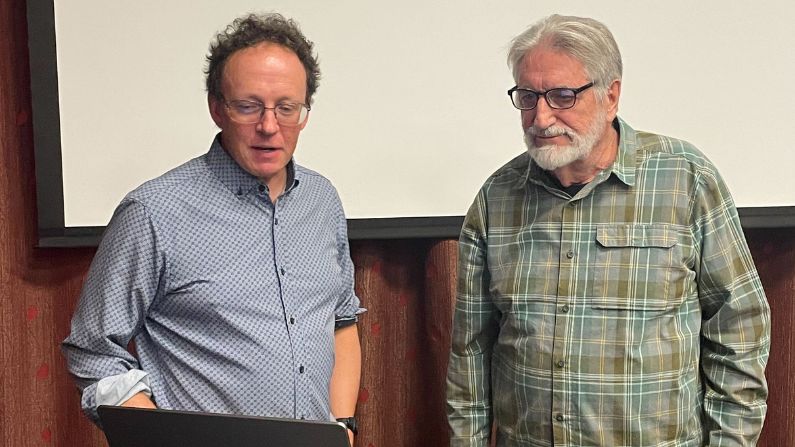A University of Wyoming professor says Jackson and the Greater Yellowstone region are getting warmer due to climate change.
At a recent talk at the Teton County Library, paleoclimatologist and professor Bryan Shuman asked a packed room to take a trip back to the last ice age — over 15,000 years ago — when the jagged peaks of the Tetons poked out of the glaciers that concealed its valleys.
Shuman, a paleoclimatologist, said the Greater Yellowstone’s temperatures have warmed about five to seven degrees Fahrenheit since then.
“So five to seven degrees was enough to transform this landscape from one being covered by ice to a kind of landscape that’s covered with forests the way we think of it today,” he said.
Today, temperatures are rising rapidly in our region — about one and a half times faster than the global average according to Shuman. If carbon emissions are not reduced, we could see another 5-7 degrees of warming in future decades, which has historically taken millennia to occur naturally.
“I think we often talk about climate change as something that’s going to happen at the end of the century, but it’s already beginning,” Shuman said, “and so one of our goals has been to really think collectively about what to anticipate, what changes should we prepare for?”
Shuman and a team of researchers predict winter snow could be replaced by rain, especially at lower elevations, due in part, to warmer night temps. And in the summer — rainfall could be less regular and more intense leading to flooding and amplifying worsening conditions for wildfires and water in the region.
Shuman said that although the Jackson Hole area is warming rapidly, coastal areas and areas of the Southwest are warming faster.
“It might not be warming as fast as other parts of the West which might make it kind of a refuge,” he said.
A climate refuge he said, meaning those in areas experiencing the impacts of climate change sooner may seek out Jackson for cooler temps and snowfall. Shuman says Salt Lake City, Utah is warming at nearly twice the rate of Jackson.The influx of people could benefit the hospitality industry while putting increased demand on housing and essential services.
Shuman is a part of WyAct, an interdisciplinary team made up of students and faculty at the University of Wyoming working to anticipate future changes in climate and water availability throughout Wyoming.






